
Welcome to the WeChat subscription account of “Sina Technology”: techsina
Text/Xiao Kui
Source/Technology News (ID: kejixinzhi)
Tesla has cut prices, and the discounts are very strong. The relevant models have dropped by nearly 50,000 yuan, and it is not only for domestic. The “big wave” of losses caught off guard caused public outrage among car owners, and many people chose to stop at the point of sale to denounce rights protection.
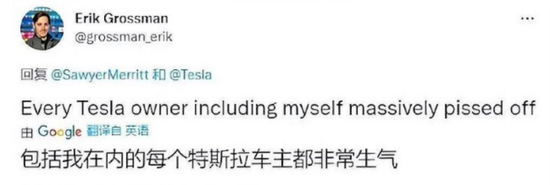
Defenders blocked Tesla’s door, but not new car owners.
Originally, Tesla’s sales performance in December was not good. The domestic market was 41,926 vehicles, a year-on-year decrease of 40.93%. Within 3 days of announcing the price cut, more than 30,000 new orders were received at once. According to relevant surveys, the growth of purely newly added stores has reached 450% month-on-month, corresponding to an average order of 110-130 per store.
Although Tesla officials have repeatedly emphasized that this is a normal price adjustment, market interpretations agree that it is a measure to deal with the decline in sales.
It seems to be a natural way to cut prices and sell them to tide over the difficulties. But if you take a closer look at this abnormal move, it seems that there is a storm brewing behind it that is about to reshape the new energy vehicle market.
Unusual price cuts
Regarding Tesla’s price cuts, the mainstream view is that more orders are needed. At the same time, due to the ultra-high gross profit margin of close to 30%, Musk can also afford this “price war”.
Since July 2022, the reserve orders of Tesla’s China factory have begun to decline sharply, from 180,200 in July to 5,800 at the end of November. In 2022, Tesla’s annual output will exceed 1.37 million vehicles, a year-on-year increase of 47%; the delivery volume will exceed 1.31 million vehicles, a year-on-year increase of 40%, but it failed to achieve the target of a 50% year-on-year increase in delivery volume (1.37 million vehicles).
More importantly, Tesla’s Shanghai plant has a production capacity of 1.1 million vehicles. According to this trend, Tesla is about to lose the good situation of “full production and full sales, hard to find a car” in the past, and production capacity and demand may appear upside down.
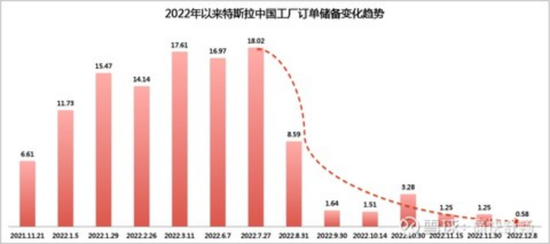
However, it is not enough to explain the price reduction solely on the basis of order pressure. From a long-term perspective, the supply and demand ends of the manufacturing industry will definitely tend to align. The matching of production capacity and demand is the ideal state, which is far from being a negative reason, let alone explaining the astonishing 20% price cut.
Tesla has always had a high-end image in the minds of market consumers. Judging from the standard of annual sales of more than 300,000 vehicles as the mainstream brand of passenger cars in China, the first echelon of mainstream luxury cars in 2022 will be the BBAT (Mercedes-Benz, BMW, Audi, Tesla) pattern. After the price cut of 220,000, the Model 3 suddenly lowered Tesla’s price range to the range of mass-market products, bordering on the price of mid-to-high-end products from Toyota, Volkswagen, and BYD, and almost lost the luxury car label.
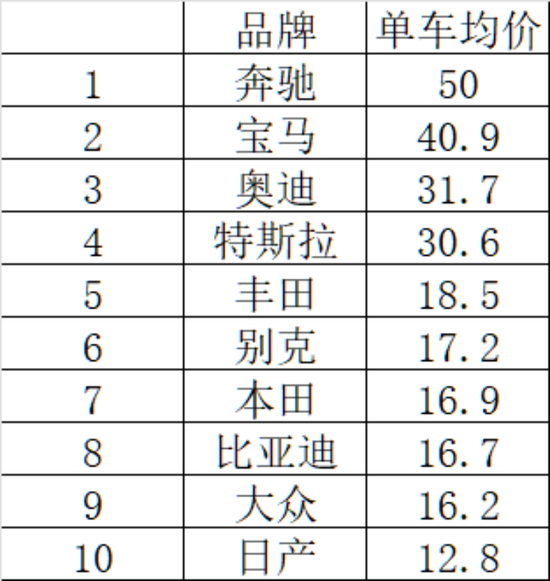
However, in the automotive market, the perception of brand and pricing binding has long been solidified. What kind of recognized brand corresponds to the price of the car. Consumers will agree with the 200,000 Volkswagen, but it is difficult to accept 1 million to buy a Volkswagen. High-end is the dream goal of countless brands. Tesla’s actions in the opposite direction inevitably have the taste of fleeing.
And the pressure of this escape comes from Tesla, which has always been regarded as the leader of electric vehicles, underperforming the market.
In 2022, Tesla’s domestic sales will be 439,770, a year-on-year increase of 37.14%; but the national sales of passenger vehicles will be 20.543 million, a year-on-year increase of 1.9%, of which 5.674 million new energy vehicles will be sold, a year-on-year increase of 90%. Longitudinal comparison of new energy market share, Tesla will be 7.76% in 2022; 10.53% in 2021, a drop of 2.77 percentage points in one year.
In contrast, BYD’s growth accounted for 257% of the total market sales growth, and Tesla’s growth accounted for 93% of the total market sales growth. The ratio of Tesla’s growth rate to the overall market growth rate has been less than 1, lagging behind the market’s β growth.
But can the decline in market share be regained only by brutal price cuts?
More than ten years ago, when Duan Yongping commented on Apple and Moutai, he said: “Unless it is absolutely necessary, it is always wrong to use price weapons. Low prices will not expand market share, but just keep the original.”
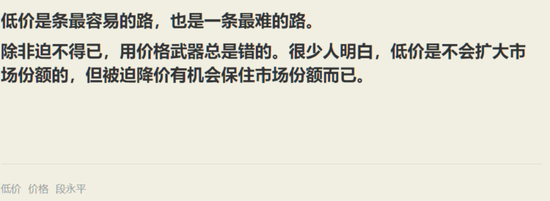
If the price war can kill the opponent, then Tesla should have given up pursuing the 30% gross profit long ago. Direct zero gross profit, killing all rivals, why let rival BYD sell 1.8 million vehicles a year?
What’s more, the price cut can’t solve the problems that have been criticized by the market for a long time, such as the poor interior and the inability to realize automatic driving. Tesla is using price cuts as a means to try to solve a problem that price cuts cannot solve.
It’s like playing a game on a computer, the graphics card is stuck, and you try to lower the picture quality and increase the frame rate. Essentially, nothing has changed, but it’s time to change the graphics card.
Tesla’s various actions indicate that the competition system originally focused on new energy vehicles has undergone changes in standards.
Return to the Civil War
Two years ago, Li Bin, the founder of Weilai Automobile, once said: “I don’t understand why people still buy gasoline cars?”
One sentence revealed the role of new energy vehicles in the entire industry at that time—intervening in the market as a challenger. At that time, the main competitor of new energy vehicles was fuel vehicles.

Fuel vehicles are a market with sufficient historical precipitation, and all consumer needs can find matching categories and price bands. Demand and price are clearly marked. After multiple rounds of reshuffle, consumers and car companies agreed that the three major components of the engine, transmission system, and chassis represent the core competitiveness of the entire automotive industry system. Many side indicators are also derived from it, such as thermal efficiency, torque, noise control and so on.
However, the current new energy vehicles powered by lithium batteries have broken the original rating system for the core capabilities of fuel vehicles. The three major components of motor, battery, and electronic control smashed the technical barriers that traditional car companies are proud of.
Take the engine as an example: In terms of power, the torque output characteristics of the motor are different from those of the internal combustion engine. The motor can reach the maximum torque in an instant, and can easily achieve the acceleration of a fuel car sports car, which greatly improves the driving experience.
In addition, the thermal efficiency of a good engine can reach 42%, and that of a poor engine is only 35%. The absolute difference of 7% corresponds to the relative difference of 20%, which means the “punishment” of fuel consumption. As for the motor, as long as the battery is large enough, the low efficiency of the motor will have little effect, the battery life can be guaranteed, and the electricity bill is only a few cents more expensive.
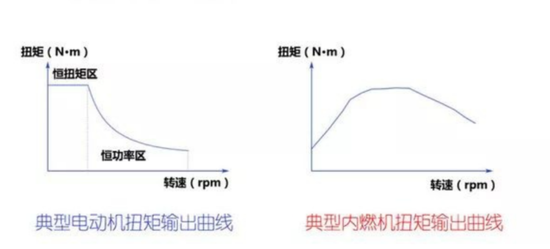
In addition to the clichéd cruising range, new energy vehicles are undoubtedly “superior” in many traditional key indicators of fuel vehicles. Both the cost and performance of the electric drive assembly are superior. In recent years, new energy vehicle batteries have become bigger and bigger, and the energy replenishment system has become more and more perfect, and the impact of mileage anxiety is gradually decreasing. In December, the domestic retail penetration rate of new energy vehicles reached 29.5%. According to the forecast of the expert team of the Passenger Federation, it will reach 36% in 2023.
With the continuous improvement of products and unique advantages, no matter from the growth rate of penetration rate or the long-term trend, there is no doubt that the logic of new energy vehicles will eventually replace fuel vehicles. At the same time, with the efforts of traditional car companies and the expansion of product lines, the product design and pricing system of new energy vehicles will eventually move closer to traditional fuel vehicles.
Before new energy vehicles enter the fully competitive market, it also means that there is a window period of demand-product absence. The success of popular models such as Ideal and Extreme Krypton shows that in the new energy vehicle market, consumers with specific needs “choose but have no choice”. Relying on intelligence as a differentiated publicity selling point is actually secretly forcing consumers to “choose one” between trends and conservatives.
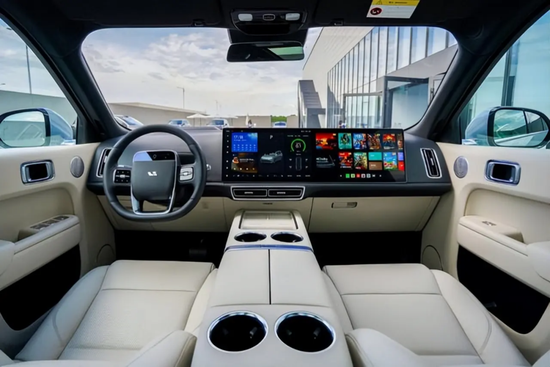
In a relatively blank market, the market’s sales expectations for a single brand are mainly based on three indicators: market multiple space, market share, and penetration rate growth rate.
However, the current penetration rate has pointed out that the multiplier space of new energy vehicles in the future will be rapidly reduced, and will soon be less than 3. Due to the withdrawal of the state subsidy in 2023, various automakers have increased their promotions, overdrafting the demand for future release to a certain extent. In addition, the cost performance of pure electric vehicles in the mainstream purchasing power price segment is temporarily weaker than that of fuel vehicles, and the growth rate of penetration rate in the short term will also be reduced accordingly.
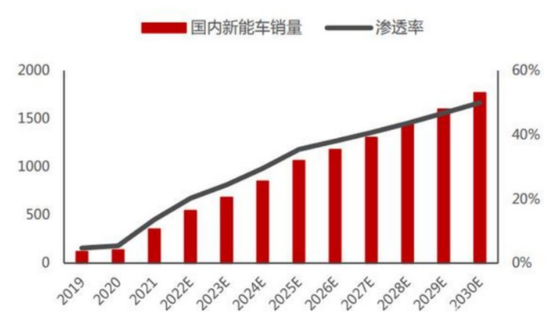
In other words, car companies are currently facing the trend of fuel vehicles being replaced, and at the same time, the growth rate is constantly tending to the marginal stock market. Therefore, comparing fuel vehicles is no longer the primary goal. How to compete with similar products and increase market share is the strategy that new energy vehicle companies should mainly consider at the current stage.
Under such logic, the purpose of Tesla’s current round of price cuts is ready to come out.
Before consumers’ awareness of Tesla’s luxury product positioning has changed, the price cut has been used to greatly improve the cost performance. Cover up the fact that consumers bought civilian-grade cars at the price of luxury cars before, and strive for another round of sales before the halo is broken.
After all, the real feedback after this round of global price cuts has verified many conjectures.
First: Value rhetoric based on cost pricing is purely wishful thinking.
Second: In the automotive industry, a market with many types of demand, it has once again been verified that the business model of turning hot models into long-term sales cannot be established. The global sales ceiling of the Model 3+Model Y (sedan+SUV) product portfolio will soon be reached (1.5 million units).
Third: The core technology 4680 battery previously promoted by Tesla is currently lagging behind the 2170 battery that is announced to be eliminated in terms of materials, energy density and production efficiency.
Fourth: There is no need to consider the short-term realization of autonomous driving. Known as the self-driving capital, California has banned the use of fully autonomous driving for promotional purposes.
All this will eventually lead to the gradual disintegration of Tesla’s brand myth. The previous 30% gross profit and the cognition of relying on product strength to overwhelm competitors will be revalued by consumers with this sharp price cut. Previously, Tesla owners might have dismissed domestic brands. But now, the auxiliary configuration is gradually catching up, and the domestic electric vehicles that reject the “raw room” interior have begun to “scent” in a real sense.
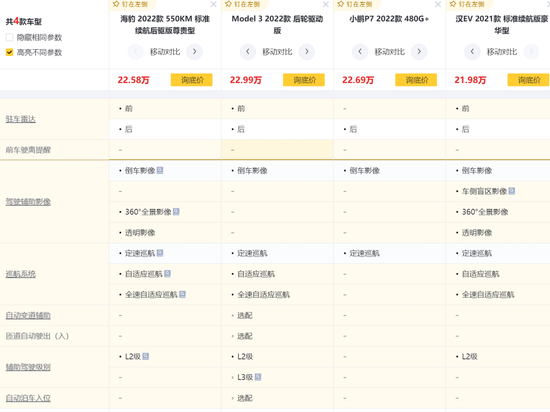
write at the end
On January 13, Huawei’s QQ announced a price adjustment, with a maximum drop of 30,000 yuan. It seems that a small number of domestic car companies have also quickly realized the storm of this new energy vehicle product change, trying to increase the cost performance of their own products by cutting prices. In the future, there will only be more and more similar operations, and more and more types of products will be launched on the market.
Regardless of the final result, Tesla is still a legend in the history of new energy vehicles. It was Tesla that announced to the world that new energy vehicles were ripe for success; it was Tesla that stirred up domestic consumers’ awareness of products and contributed to the prosperity of new forces blooming.
At the same time, Tesla, standing on the cusp of the storm, took the lead in launching this civil war of returning to cost performance at the cost of brand and product strength, announcing that new energy vehicles no longer need to benchmark against fuel vehicles.
It is a bit difficult for Tesla to launch new products in a short period of time, but as long as it can maintain sales, occupy the right to speak in the supply chain, and continue to control the bargaining power of lithium battery materials; The decline in brand power can be thrown out as a means.
The last king is not necessarily the one who plays the best cards on the poker table, but it must be the one who sits at the end.

This article is reproduced from: https://finance.sina.com.cn/tech/csj/2023-01-16/doc-imyakyaa7420044.shtml
This site is only for collection, and the copyright belongs to the original author.